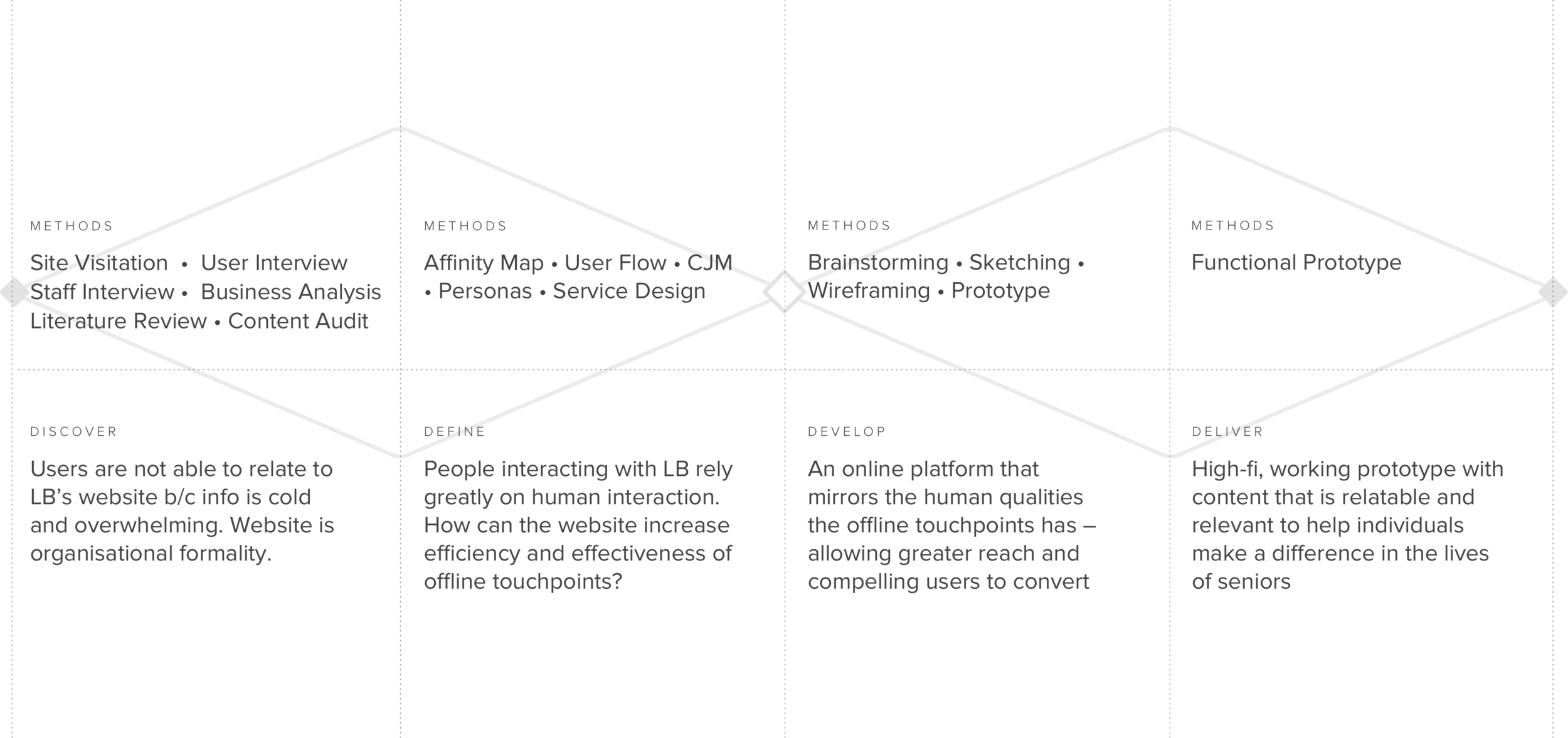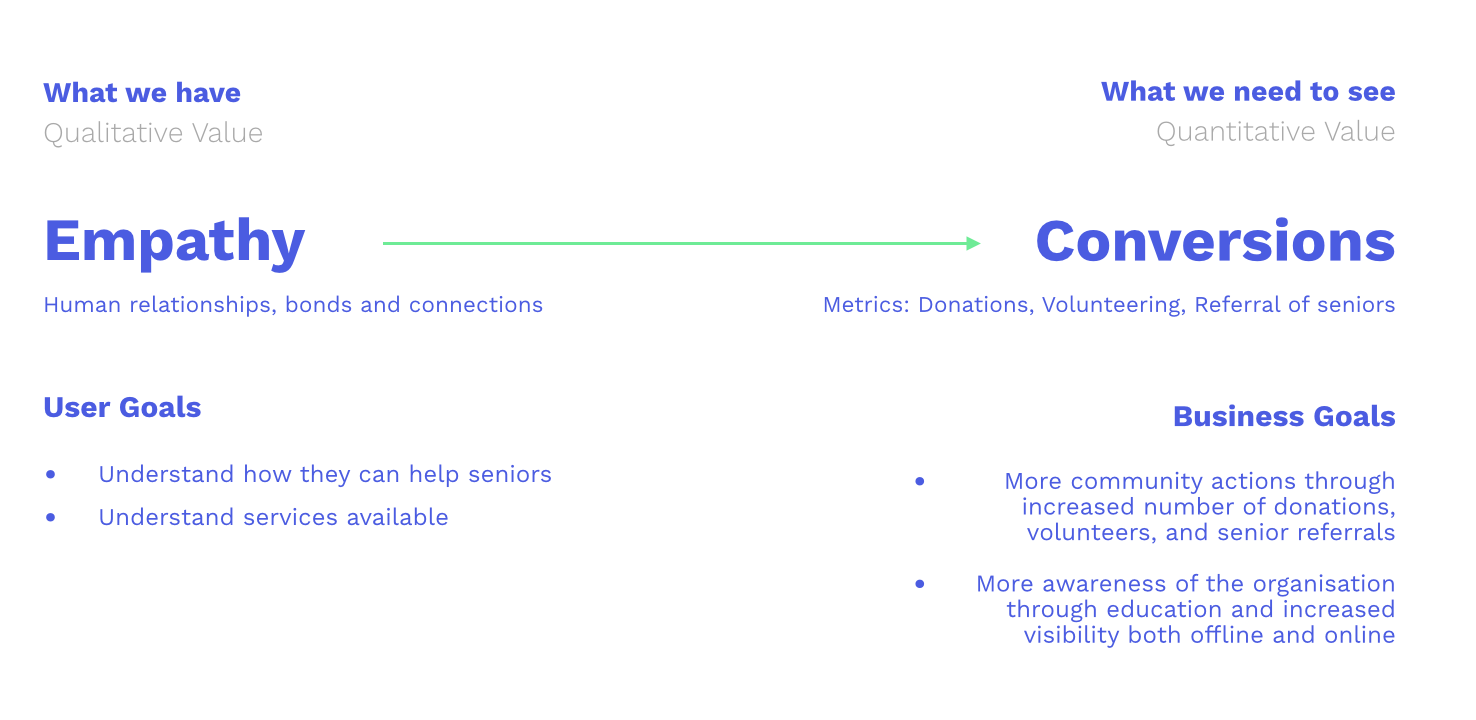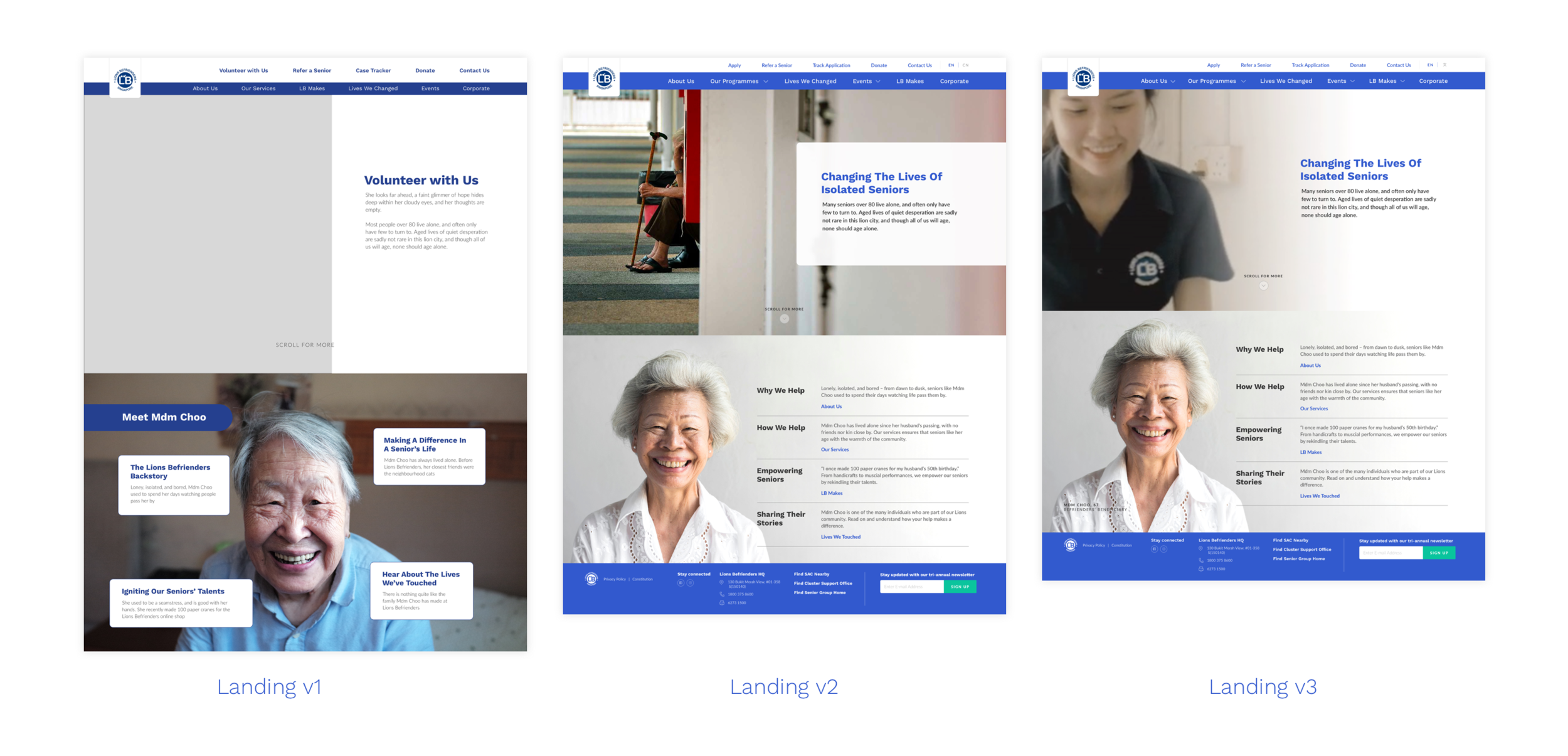Lions Befrienders Service Design
UX Design • Service Design • Web Redesign
As part of the UX Immersive Design Bootcamp in General Assembly, I was given the opportunity to rethink the role of Lions Befrienders website in the organisations service blueprint. I worked closely with 2 other teammates to conduct business and user research, ideate and refresh the service design of Lions Befrienders. I took lead in creating the prototype for the website.
Methods used:
Cognitive Walkthroughs, User Research, Business Research, Persona, Customer Journey Mapping, Content Strategy, Service Blueprint, User flow, Wireframe, Prototype, Responsive design, Visual Design, Usability Testing.
Duration:
2 Weeks
Tools Used:
Sketch, Anima, Keynote
Try the working prototype of the redesigned website here.
Read the in-depth retrospective of the project here.
Overview
Lions Befrienders (LB) needed a website redesign. However, how might the website play a more important role in LB’s service design as a whole? By conducting research, ideating and testing, we created website that was better integrated with their offline service– a digital Lions Befrienders experience. The website was more relatable and compelling, and mirrored the offline experience. Relevant information was brought up front, and this assured people to take the step to become a volunteer.
Additionally, the responsive states were designed with thought as the website now plays a bigger part in the service. Staff members and volunteers would be using the website on multiple devices to help sign people up during walk-ins, and could be used as a talking point when explaining what Lions Befrienders does.
01. Discover & Define
Lions Befrienders provide an enriching, meaningful community for seniors in Singapore. They rely on volunteers, both young and old, to provide care and friendship to the seniors. However, volunteers from the younger generation are harder to recruit as their interaction with the organisation varies from the older generation.
Business, user and content research found that LB’s website was hardly used, operations were run based on individual LB Centers, and most volunteers came on board through personal connections. We used our findings, found opportunities by understanding our users, and redesigned the service design of LB and in particular, their website, which could better be purposed to increase reach and conversion more efficiently.
On top of literature research, cognitive walkthroughs and a content audit of the current website, we went on a site visit to better understand the environment and organisation. On site, we interviewed 3 staff members from LB, 1 from HQ, and 2 volunteers at the LB center.
We narrowed down our target users to people who are interested in helping seniors through LB’s volunteering programmes, donations, or referral of seniors, but have yet to take action. After interviewing 4 members of the public of our target users, and 2 users who has had experiences with volunteer work, we crafted personas and their respective customer journey maps to understand their journey, and to highlight opportunities.
Refined personas and CJMs of our users
Creating the Customer Journey Map
Understanding and rethinking Lion Befriender’s Service Design
problem statementUsers are not able to relate to the website because information is presented in a clinical and overwhelming format. The website is currently designed as a organisational formality. Its content lacks relevance to its users, who rely greatly on human interactions to take action.
SOLUTION STATEMENTWe can compel people to convert online by ensuring Lion Befriender’s online presence mirrors the human qualities that the offline touch-points have. This will allow it to communicate (as much as possible) the qualities of the offline LB centre, but with much greater potential reach.
Content StrategyTo increase the number of conversions, we will provide empathetic, relatable and relevant information about the services that Lions Befrienders offers, to aid individuals in making a difference in the lives of isolated seniors.
02. Service Design
What will the role of the website in Lion’s Befrienders larger service design blueprint? How does the website integrate with it’s offline touch-points?
Informed by our research, our team rethought the entire service design of LB. Actions, players, physical evidence, front-office, back-stage, and technology present were all taken into consideration for service blueprint. We created a service design that optimised and enhance the workflow of LB staff, its volunteers, potential volunteers and its beneficiaries.
03. Ideation and Design
With our statements properly crafted, we generated ideas on whiteboards as a team and converted them to wireframes on Sketch. We ran two usability tests and iterated on the designs based on feedback. Our biggest issue between iterations was copy. Users had mixed understandings of “Case Tracker” and had trouble understanding what the page was about when they first see it.
Despite a longer page, colorful illustrations and smaller blocks of text makes for a delightful and engaging experience












